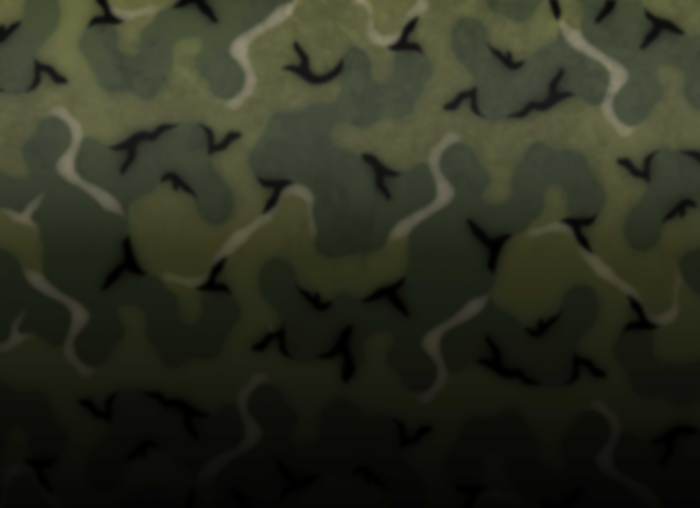M48A1 Patton Medium Tank
Work on the M48 tank began in October, 1950, before the first deliveries of the M47. The M47 was a stopgap until a superior medium tank design could be developed. The new tank that became the M48 underwent teething in 1952. It featured a one-piece cast turret in dome shape that offered improved ballistic protection. Most contemporary turrets narrowed at their base, creating a shot trap between the lower turret and hull that increased vulnerability. The M48 design eliminated this weakness, since the turret base overhung the tracks. The turret’s shape derived from the Soviet JSIII, considered the nemesis of American tanks in the late 1940s and early 1950s because of its superior armor, armament, and range. Other principle features of the M48 included wider tracks, a 90mm gun mount that permitted 15-minute gun tube changes, and for the first time in an American medium tank, a four-man crew. The design incorporated a cross-drive transmission and the same 810 horsepower, 12-cylinder gasoline engine intended for the T43 heavy tank to ensure sufficient mobility. Wider tracked than older model tanks, the 49-ton M48 had a one-piece cast hull. Maximum speed was 30 MPH. The Army’s emphasis upon long range accuracy led to the incorporation of a fire control system in the M48. This system included a stereoscopic rangefinder, ballistic computer, ballistic drive, and gunners periscope. Collectively, these mechanical devices resembled in miniature the fire control systems used by naval vessels. Only after WWII did such systems become small enough for use in combat vehicles. They permitted tanks to engage effectively at much longer ranges than in WWII – a critical consideration for an army expecting to enter the battlefield outnumbered. Instead of a gunner’s sight slaved to the gun tube, the ballistic computer and drive computed the range and elevated the gun. The gunner’s primary responsibility lay in keeping the cross-hairs on the target. The mechanical ballistic computer made a more accurate computation of range possible by mathematically accounting for such factors as vehicle cant and ammunition type. The Army planned to produce over 9,000 M48s within three years of development. Such rapid, mass production would redress the imbalance between Soviet and American tank forces. Meeting this goal, however, required production simultaneous with operational testing and development. Chrysler Corporation became the principle producer of the tank. In a manner reminiscent of the M3 medium tank in WWII, Chrysler began building a new tank plant in Newark, New Jersey, to build the M48 while it continued to evolve the design. Expected production and teething troubles led to the creation of integrating committees to coordinate tank and component development. These committees included military and industrial representatives who provided early warning of defects and recommended remedies. Between April 1952 and December 1954, nearly 7,000 M48s were produced, with an additional 2,500 to be built through 1956. Combat units immediately received 2,120, but correction of defects discovered after production delayed the fielding of the remaining tanks. The first production vehicles suffered from excessive oil consumption and engine failures after only 1,000 miles. The gasoline engine managed only .33 miles per gallon, limiting range to 75 miles. The M48’s width proved too wide for many European tunnels, complicating rail transport. Operational readiness rates of M48-equipped units tended to be low. The tank suffered from engine, transmission, track, and suspension problems, and the fire control system’s complexity made it difficult to operate. However, the M48 was considered an even match for its Soviet counterpart, the T54. The Army expected difficulties in engagements with the JSIII, since the M48’s 90mm gun could not consistently penetrate the JSIII’s frontal armor, even with special armor-piercing or HEAT ammo. Correction of mechanical deficiencies resulted in a series of product improvements throughout the 1950s. The suspension, engine, and transmission underwent modifications that resulted in the M48A2. External fuel tanks boosted the tank’s range but increased vulnerability, making them unpopular. Poor range remained a problem until the Army lifted its prohibition on the use of diesel fuel by large combat vehicles in 1955. Shortly thereafter the M48A3 emerged with a more fuel efficient diesel engine that doubled the effective operating range. The M48 remained in production until 1961, with a total production of 11,703 tanks, when it was replaced by the M60. Our M48A1, Serial No. 4660, was built by the General Motors Fisher Body Division in the Grand Blanc Tank Plant. In 1955, Fisher Body converted the tank plant into an automotive body metal fabricating facility.







